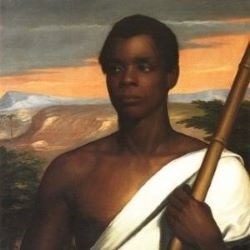|
Slavery was the major political, social, and moral question of Martin Van Buren’s generation, and his relationship with the institution was incredibly complicated. Van Buren’s political connections to slavery and the lives of enslaved people who lived, worked, and visited Lindenwald are stories integral to our understanding of the site. 
Library of Congress Martin Van Buren and the Politics of SlaveryVan Buren grew up not only among enslaved people, but also with six slaves owned by his parents. This early exposure to the institution of slavery later provided him with an understanding of southern politics that differed from his northern colleagues raised without similar experiences. It was an understanding Martin Van Buren seemed to exploit for professional success, but also an understanding he struggled with as the country began to split over the fate and expansion of slavery. 
New Haven Museum Self-EmancipationThroughout the history of the United States, enslaved individuals have taken an active role in their own emancipation. Learn more about some of the various ways people sought freedom. 
Library of Congress Martin Van Buren, Compromise, and Privilege
|
Last updated: September 18, 2022
